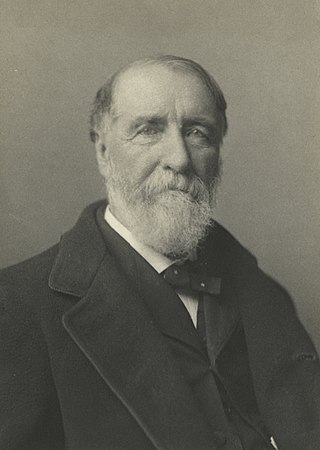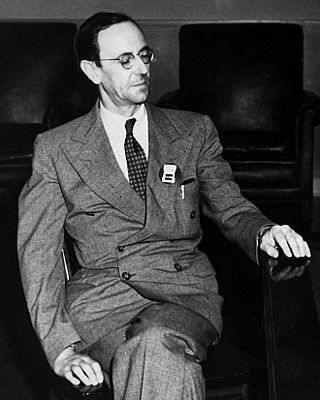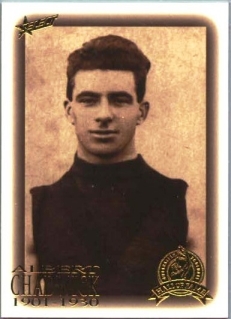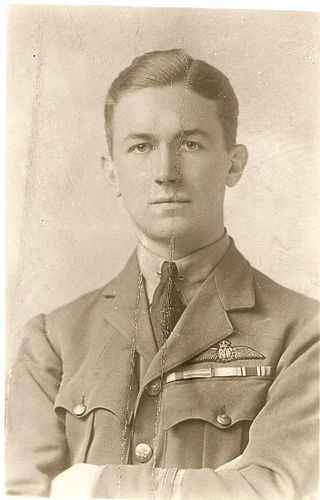Related Research Articles

Henry Chadwick was an English-American sportswriter, baseball statistician and historian, often called the "Father of Baseball" for his early reporting on and contributions to the development of the game. He edited the first baseball guide that was sold to the public. He is credited with creating box scores, as well as creating the abbreviation "K" that designates a strikeout. He is said to have created the statistics of batting average and earned run average (ERA). He was posthumously inducted into the National Baseball Hall of Fame in 1938.

The Royal Air Force (RAF) is the United Kingdom's air and space force. It was formed towards the end of the First World War on 1 April 1918, becoming the first independent air force in the world, by regrouping the Royal Flying Corps (RFC) and the Royal Naval Air Service (RNAS). Following the Allied victory over the Central Powers in 1918, the RAF emerged as the largest air force in the world at the time. Since its formation, the RAF has taken a significant role in British military history. In particular, during the Second World War, the RAF established clear air superiority over Hermann Göring's Luftwaffe in the Battle of Britain, and led the allied strategic bombing effort.

The Royal Australian Air Force (RAAF) is the principal air and space force of Australia, a part of the Australian Defence Force (ADF) along with the Royal Australian Navy and the Australian Army. Constitutionally, the Governor-General of Australia, is the de jure Commander-in-Chief of the Australian Defence Force. The Royal Australian Air Force is commanded by the Chief of Air Force (CAF), who is subordinate to the Chief of the Defence Force (CDF). The CAF is also directly responsible to the Minister for Defence, with the Department of Defence administering the ADF and the Air Force.

Sir James Chadwick, was a British physicist who was awarded the 1935 Nobel Prize in Physics for his discovery of the neutron in 1932. In 1941, he wrote the final draft of the MAUD Report, which inspired the U.S. government to begin serious atom bomb research efforts. He was the head of the British team that worked on the Manhattan Project during World War II. He was knighted in Britain in 1945 for his achievements in physics.

Events from the year 1893 in Canada.

Number 8 Squadron of the Royal Air Force last operated the Boeing E-3D Sentry AEW1 (AWACS) from RAF Waddington, Lincolnshire. As of 2020, the RAF AWACS fleet was made up of three Sentry AEW1s, down from seven originally ordered in the late 1980s. Pursuant to the 2021 defence review, the E-3D Sentry aircraft made its final flight in U.K. service in August 2021.

Number 1 Squadron, also known as No. 1 (Fighter) Squadron, is a squadron of the Royal Air Force. It was the first squadron to fly a VTOL aircraft. It currently operates Eurofighter Typhoon aircraft from RAF Lossiemouth.
Elwyn Roy King, DSO, DFC was a fighter ace in the Australian Flying Corps (AFC) during World War I. He achieved twenty-six victories in aerial combat, making him the fourth highest-scoring Australian pilot of the war, and second only to Harry Cobby in the AFC. A civil pilot and engineer between the wars, he served in the Royal Australian Air Force (RAAF) from 1939 until his death.

Number 45 Squadron is a flying squadron of the Royal Air Force. The squadron, which was established on 1 March 1916 as part of the Royal Flying Corps, currently provides flying training using Embraer Phenom T1s and operates under the command of No. 3 Flying Training School at RAF Cranwell, Lincolnshire.

Sir Albert Edward Chadwick, CMG, MSM was an Australian rules footballer in the (then) Victorian Football League (VFL).
The Oswald Watt Gold Medal is an Australian aviation award named for Oswald Watt (1878–1921), a decorated pilot in World War I.
No. 104 Squadron RAF is a former squadron of the British Royal Air Force.

Air Commodore Arthur William Murphy, DFC, AFC, FRAeS was a senior engineer and aviator in the Royal Australian Air Force (RAAF). He accompanied Henry Wrigley on the first trans-Australia flight from Melbourne to Darwin in 1919, a feat that earned both men the Air Force Cross. Murphy later played a leading role in military aircraft maintenance and production.
Flight Lieutenant William Geoffrey Meggitt was a British World War I flying ace credited with six aerial victories.

Henry Aloysius Petre, DSO, MC was an English solicitor who became Australia's first military aviator and a founding member of the Australian Flying Corps, the predecessor of the Royal Australian Air Force. Born in Essex, Petre forsook his early legal career to pursue an interest in aviation, building his own aeroplane and gaining employment as an aircraft designer and pilot. In 1912, he answered the Australian Defence Department's call for pilots to form an aviation school, and was commissioned as a lieutenant in the Australian Military Forces. The following year, he chose the site of the country's first air base at Point Cook, Victoria, and established its inaugural training institution, the Central Flying School, with Eric Harrison.

Captain Albert James Enstone was a British World War I flying ace. Various sources credit him with differing air victory scores. In one text, he is credited with 13 confirmed aerial victories and driving down 11 other German aircraft, including three Gotha bombers. Another source claims 15 confirmed aerial victories; ten were destroyed, and five were driven down out of control. He is known to have attacked two Gotha bombers. Regardless of his actual victory totals, records show that Enstone served his country valiantly.
Major John Charles Bradley Firth was a British World War I flying ace credited with 11 aerial victories while campaigning on the Italian Front.
Edward Dewhirst was a well-known South Australian minister of religion and educationist, born in Suffolk, England. His five children were also prominent in business and public life.
The 1946 King's Birthday Honours in New Zealand, celebrating the official birthday of King George VI, were appointments made by the King on the advice of the New Zealand government to various orders and honours to reward and highlight good works by New Zealanders. They were announced on 13 June 1946.
The 1948 New Year Honours in New Zealand were appointments by King George VI on the advice of the New Zealand government to various orders and honours to reward and highlight good works by New Zealanders, and to celebrate the passing of 1947 and the beginning of 1948. They were announced on 1 January 1948.
References
- 1 2 "James Henry Dewhirst". The Aerodrome. 2014. Retrieved 21 November 2014.
- ↑ Dewhirst, Stephen (2014). "Family of James Henry Dewhirst and Emily Chadwick". Descendants of the Dewhirsts of Keighley, Yorkshire. Retrieved 21 November 2014.